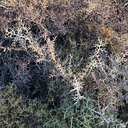Activism: spectrum of actions to non-actions
Recently I have been discussing with people from Scholars at Risk (SAR) organisation. Amy Kapit, Senior Program Officer, asked me many questions about the role of activism.
Scholars at Risk organizes various events and programs to support scholars, activists around the globe together with various international organisations, such as the UN Human Rights Council (UNHRC).
Following this conversation I tried to explore various facets of activism and how it can manifest in different forms: from hidden to open activism, data activism or artivism, from political to environmental topics of activism.
What is activism? According to the Cambridge Vocabulary activism is the use of direct and noticeable action to achieve a result, usually of a political or social nature. Often activism is associated with purpose, targeting various general global issues, yet depending on countries, situations, this situation may vary.
Hidden or open activism
Whether concealed or overt, activism takes various forms. While we commonly link activism to visible street demonstrations, it can manifest in ways hidden from the public eye. Contrary to the open activism where people actively engage in the forms of street protests, engaging with organisations, political representatives, hidden activism is a specific activism that is not immediately apparent or visible, where people do not actively announce their actions, their names, but their activities may be more behind-the-scenes efforts, such as organizing and strategizing, rather than public demonstrations or protests.
In some countries, like Iran or Belarus with the government selecting the oppressive mechanisms of regulation of social movements, often people are risking their lives when announcing any actions in public and engaging in open activism. Hence ‘hidden activism’ may help to protect people in such cases.
Photo from wikipedia https://en.wikipedia.org/wiki/Mahsa_Amini_protests
Data activism — data as an act
Various instances of volunteered digital activism exist, such as the Anonymous movement involving hackers, and citizens’ communities collecting environmental or urban data. These forms of activism, often unconventional, may not immediately align with traditional perceptions of activism but play a significant role in treating social and environmental issues.
One of the project to look at here is CorrelAid https://www.correlaid.org/
CorrelAid, a non-profit organization, is dedicated to connecting data enthusiasts with social projects to address societal challenges. Their activities focus on leveraging data for social good by collaborating with volunteer data scientists and analysts on projects for non-profit organizations (such as NGOs, education initiatives, city halls, citizens activism).
Important part of Correlaid focuses on skill-building through training sessions and workshops, fostering a community of individuals passionate about data science, and advocating for open data principles to promote transparency through making the projects and initiatives documented openly on the Correlaid website, open documents, github.
Throughout the years Correlaid organised multiple open events, hackathons to bring together participants to collaboratively address global challenges. In 2021 such challenges included problems such as overpopulation, education, and mapping. Activities include identifying problems, managing data, analyzing information, visualizing findings, collaborating for multidisciplinary solutions, prototyping innovative tools.
Contemplative activism
Contemplative activism, with the concept of non-action as an action, draws from philosophies that emphasize mindfulness, reflection, and inner transformation as essential components of social change. The idea is rooted in the belief that one can influence the world by cultivating inner peace, compassion, and understanding. This approach challenges the traditional notion of activism that often involves outward, visible actions.
Contemplative activism was largely inspired by Zen philosophy and environmental activism, some of them summarized in ‘Zen and art of saving the planet’. Zen teachings, and environmentalism explore similar ideas. One of the most known recent examples is the movement which was largely supported in the Plum village monastery by Thich Nhat Hanh, a Vietnamese Zen Buddhist monk, poet, and peace activist. He embodied the principles of contemplative activism, emphasizing the concept of “Engaged Buddhism,” which encourages individuals to bring mindfulness and compassion into social and environmental issues.
Diverse expressions of activism include its vital types, such as environmental and art-ivism (art as an act, movement especially well known as part of performative art), extending beyond conventional perceptions. Environmental activism, intertwined with climate concerns, often takes a political turn, involving protests and efforts to influence global political landscapes. This may include engagement in debates, lobbying, and advocating for specific policies. An illustration of this is ‘Fridays for the Future’, a global movement mobilizing a substantial number of young activists striving for positive change.
Pathways of activism
Discussing with martial art teachers and Zen masters I was asking one question, specifically, what could be the best way to act, yet not to disbalance your energy?
One of the answers I got was that any action, which we are taking may be charged with different energies of 1) warrior, 2) artist, 3) meditator. Balancing those may bring peace not just to us, but also to the whole world. Ueshiba in his book “Art of Peace” talks about the concept of acting as a warrior in the world while simultaneously fostering and preserving inner peace.
Maybe such perspective on the action may be then directly linked to possible pathways of changing ways we act, ways we spread our energies, whether being part of student activists groups or just being part of neighborhood activities.
